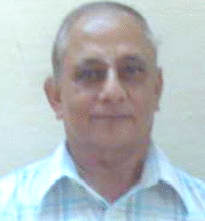The exam consists of three graded sections, plus a required experimental section that is not included in the reported score. The three graded sections are analytical writing, verbal, and quantitative. The analytical writing section will always appear first, while the verbal, quantitative, and experimental sections may appear in any order on the test. An additional non-scored and clearly-marked optional research section may also appear at end of the test. The entire test procedure takes about 3 hours.
Analytical writing section
The analytical writing section consists of two different essays, an "issue task" and an "argument task". The writing section is graded on a scale of 0-6, in half-point increments. The essays are written on a computer using a word processing program specifically designed by ETS. The program allows only basic computer functions and does not contain a spell-checker or other advanced features. Each essay is scored by at least two readers on a six-point holistic scale. If the two scores are within one point, the average of the scores is taken. If the two scores differ by more than a point, a third reader examines the response.
Issue task
The test taker will be able to choose between two topics upon which to write an essay. The time allowed for this essay is 45 minutes.
Argument task
The test taker will be given an "argument" and the test taker will be asked to write an essay that explains why one "side" of the argument is superior. Typically, the task requires that the taker identify and critique the logical fallacies of the argument. The time allotted for this essay is 30 minutes.
Verbal section
One graded multiple-choice section is always a verbal section, consisting of analogies, antonyms, sentence completions, and reading comprehension passages. Multiple-choice response sections are graded on a scale of 200-800, in 10 point increments. This section primarily tests vocabulary, and average scores in this section are substantially lower than those in the quantitative section. In a typical examination, this section may consist of 30 questions, and 30 minutes may be allotted to complete the section.
Quantitative section
The quantitative section, the other multiple-choice section, consists of problem solving and quantitative comparison questions that test high-school level math. Multiple-choice response sections are graded on a scale of 200-800, in 10 point increments. In a typical examination, this section may consist of 28 questions, and test takers may be given 45 minutes to complete the section.
Experimental section
The experimental section will be either a verbal, quantitative or the essay section which contains new questions that ETS is considering for future test editions. This section will not count toward the test-taker's score; however, the section will appear identical to either the "actual" verbal or quantitative section and will likewise be a multiple-choice test with the same number of questions and the same time allotment as the "real" verbal or quantitative section. The test taker will have no way of knowing which section is experimental, so the test taker is forced to complete this section.
If the experimental section appears as an analytical writing question (essay), if an "issue" type question is presented, a choice between two topics will not be given. This coupled with the fact that the true analytical writing section is the first test given can help the test-taker to deduce which is the experimental section and the taker can thus lower the importance of that section.
Research Section
An additional research section may appear at the end of the test. Unlike the experimental section, this section will be clearly marked and will be completely optional. The test taker's participation or refusal to participate will not affect the reported score in any way.
Computerized adaptive testing
The common (Verbal and Quantitative) multiple-choice portions of the exam currently use computer-adaptive testing (CAT) methods that automatically change the difficulty of questions as the test taker proceeds with the exam, depending on the number of correct or incorrect answers that are given. The test taker is not allowed to go back and change the answers to previous questions, and some type of answer must be given before the next question is presented.
The first question that is given in a multiple-choice section is considered to be an "average level" question that half of the GRE test takers will answer correctly. If the question is answered correctly, then subsequent questions become more difficult. If the question is answered incorrectly, then subsequent questions become easier, until a question is answered correctly.This approach to administration yields scores that are of similar accuracy while using approximately half as many items.However, this effect is moderated with the GRE because it has a fixed length; true CATs are variable-length, where the test will stop itself once it has zeroed in on a candidate's ability level.
The actual scoring of the test is done with item response theory (IRT). While CAT is associated with IRT, IRT is actually used to score non-CAT exams. The GRE subject tests, which are administered in the traditional paper-and-pencil format, use the same IRT scoring algorithm. The difference that CAT provides is that items are dynamically selected so that the test taker only sees items of appropriate difficulty. Besides the psychometric benefits, this has the added benefit of not wasting the examinee's time by administering items that are far too hard or easy. This occurs in fixed-form testing.
Monday, August 4, 2008
GRE
Posted by Mr. Narendran (+91 9884544509) at Monday, August 04, 2008
Subscribe to:
Post Comments (Atom)



0 Comments:
Post a Comment